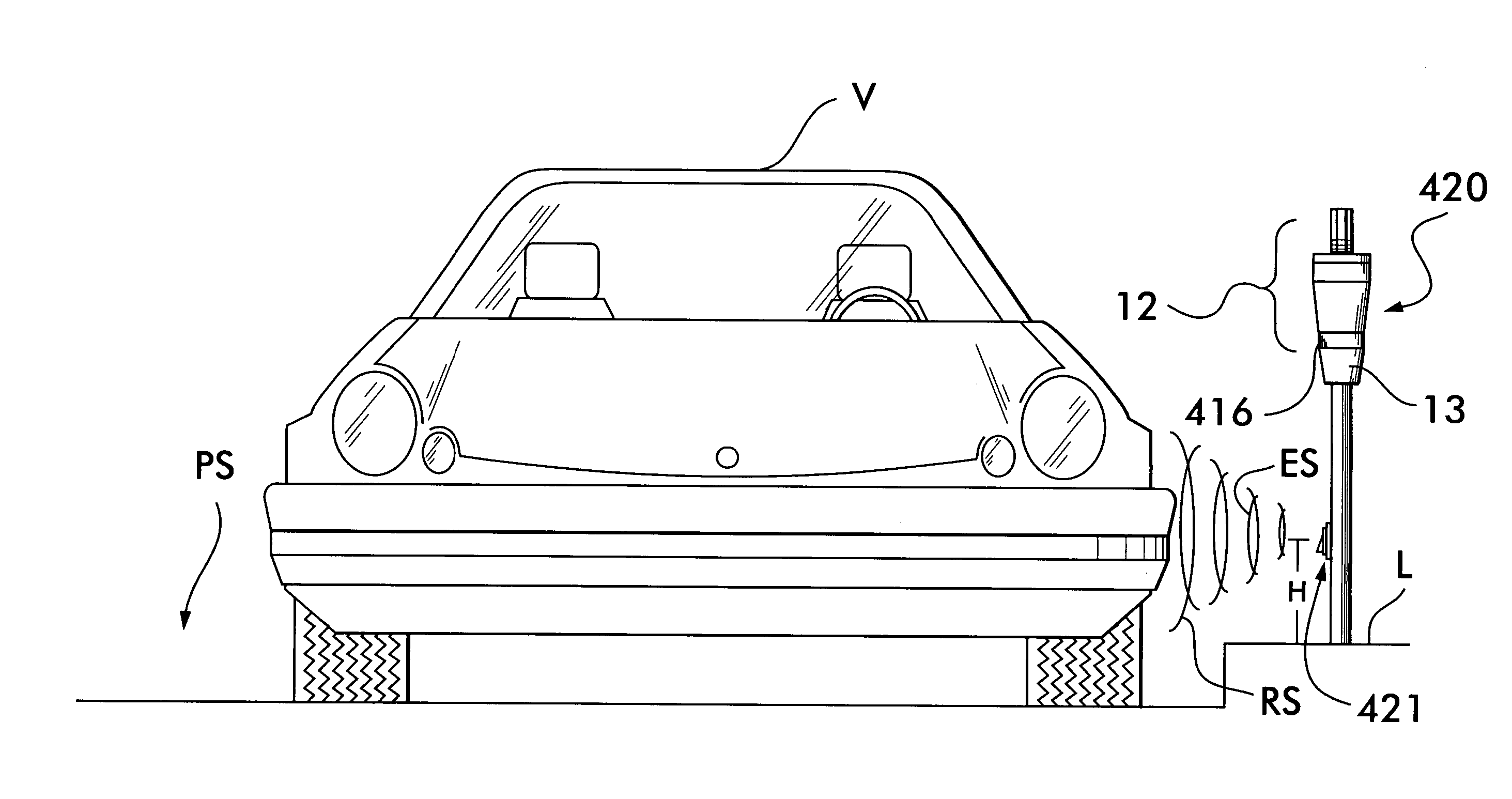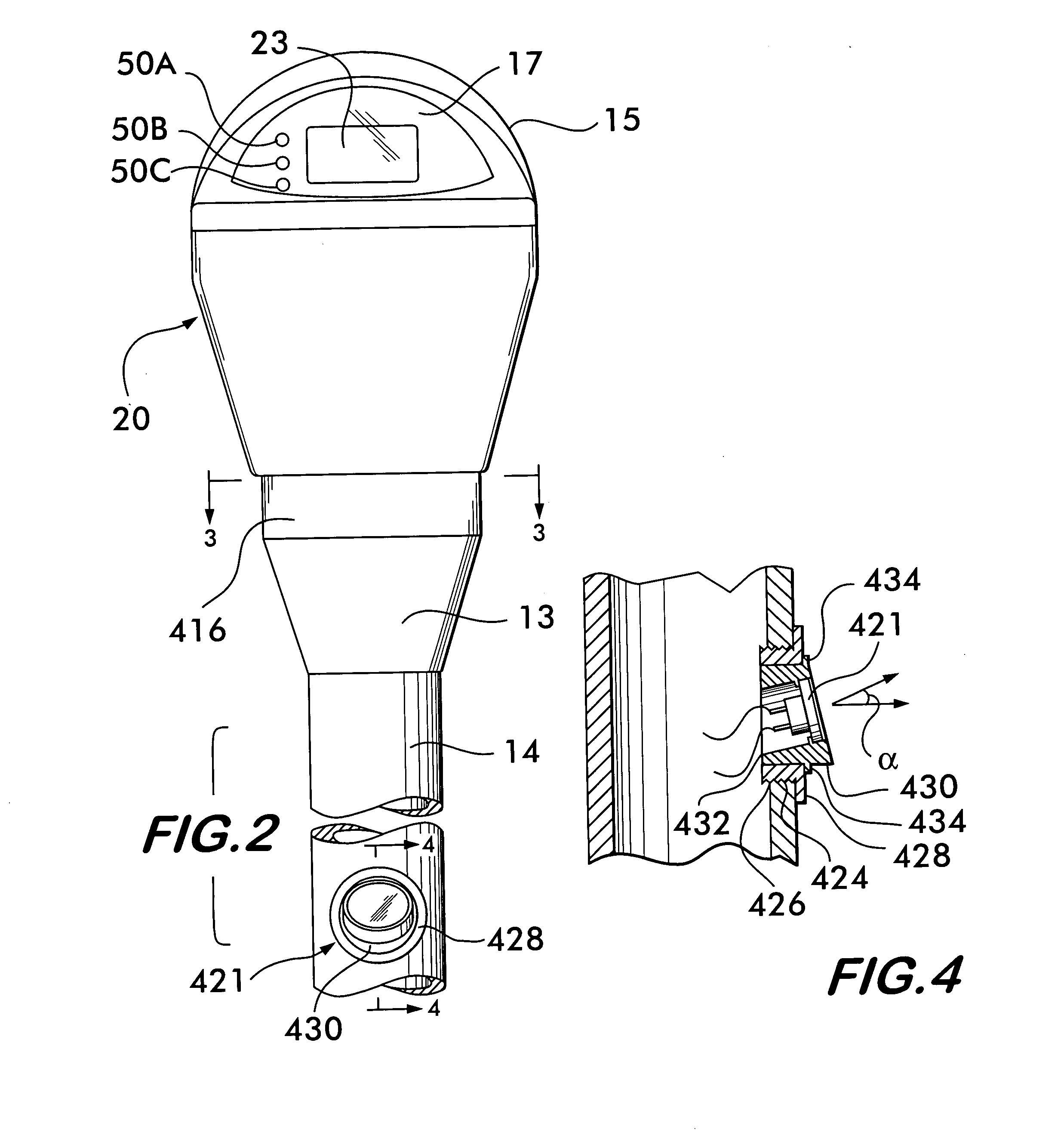Electronic parking meter with vehicle detecting sensor
a parking meter and sensor technology, applied in the field of electric parking meters, can solve the problems of inadvertent or intentional presence of a person in front of the meter, tampering with the meter, and elusive actual achievement of this goal
- Summary
- Abstract
- Description
- Claims
- Application Information
AI Technical Summary
Benefits of technology
Problems solved by technology
Method used
Image
Examples
Embodiment Construction
[0035] Certain terminology is used herein for convenience only and is not to be taken as a limitation on the present invention. In the drawings, the same reference letters are employed for designating the same elements throughout the several figures.
[0036] It should be understood that the invention of the present application is an improvement over that of U.S. Pat. No. 6,229,455 (Yost, et al.) and whose entire disclosure is incorporated by reference herein. In general, one of the key improvements of the present invention over the invention disclosed in U.S. Pat. No. 6,229,455 (Yost, et al.) is the use and placement of a single vehicle detecting sensor 421 rather than the use of three such sensors adjacent the parking meter housing. Furthermore, the present invention does not use an optical tamper system as also disclosed in U.S. Pat. No. 6,229,455 (Yost, et al.).
[0037]FIG. 1 depicts the invention 420 of the present invention installed adjacent a corresponding parking space PS that...
PUM
 Login to View More
Login to View More Abstract
Description
Claims
Application Information
 Login to View More
Login to View More - R&D
- Intellectual Property
- Life Sciences
- Materials
- Tech Scout
- Unparalleled Data Quality
- Higher Quality Content
- 60% Fewer Hallucinations
Browse by: Latest US Patents, China's latest patents, Technical Efficacy Thesaurus, Application Domain, Technology Topic, Popular Technical Reports.
© 2025 PatSnap. All rights reserved.Legal|Privacy policy|Modern Slavery Act Transparency Statement|Sitemap|About US| Contact US: help@patsnap.com



